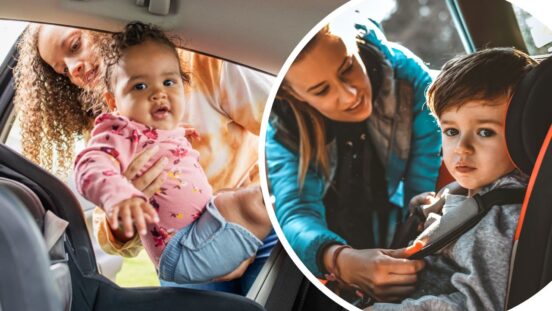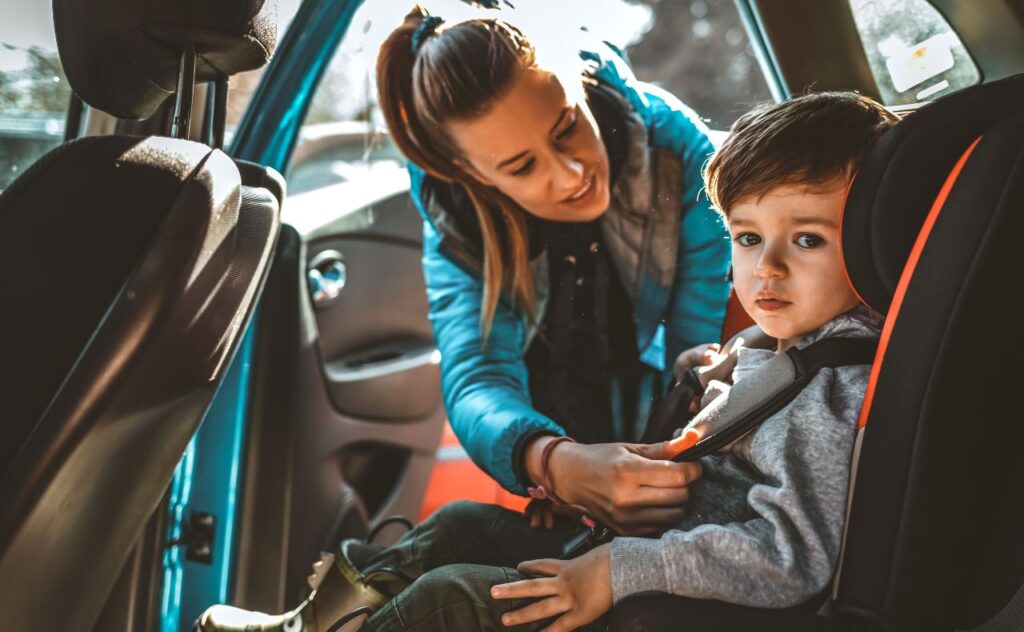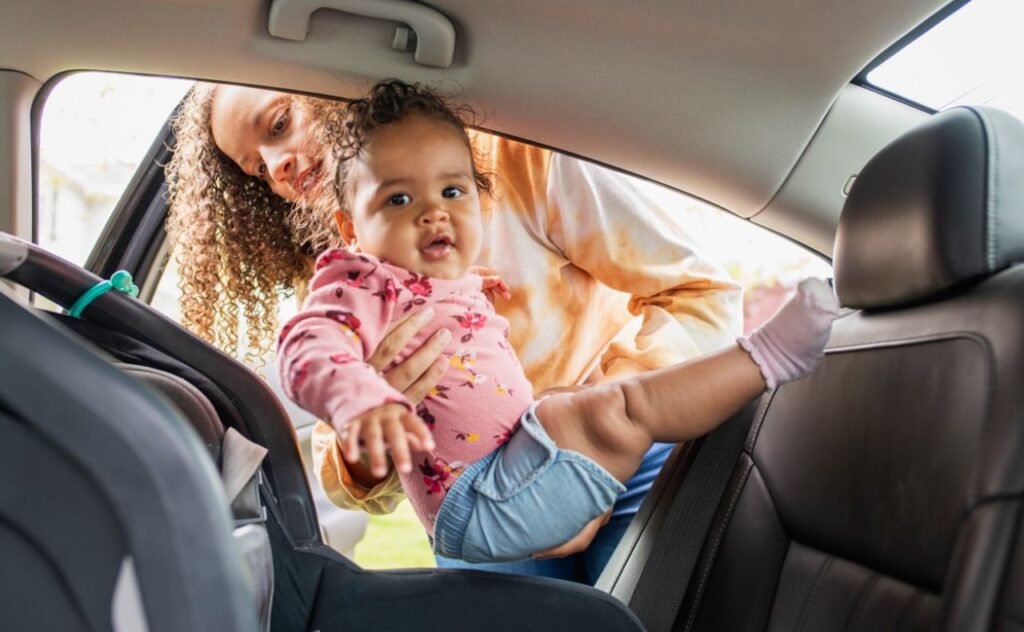Babies and kids riding in taxis and Ubers: The safety rules you need to know

Child and baby car seat laws vary across different Australian states and territories.
The law on car seats and travelling in taxis and rideshares like Uber, differs from state to state in Australia but the safest option for your baby or older child is for them to be safely secured in an approved child restraint for their age.
By age, the requirements are:
- Age 0 – 6 months: Child must be secured in an approved rearward facing child restraint.
- Age 6 months – 4 years: Child must be secured in either a rear or forward facing approved child restraint with an inbuilt harness.
- Age 4 – 7 years: Child must be secured in a forward facing approved child restraint with an inbuilt harness or an approved booster seat.
Taxi and Uber car seat rules across Australian states and territories
In all Australian states and territories except New South Wales, children can travel in a taxi without a child restraint however a car seat is required in Ubers. Here’s a snapshot at how some of the rules vary across the states…
New South Wales car seat rules
Children under the age of 12 months are not permitted to travel in a taxi unless they are secured in an approved child car seat, as follows:
- Children aged less than 6 months: approved rearward facing restraint
- Children aged 6 months to less than 12 months: approved rearward or forward facing restraint with an inbuilt harness
Children over the age of 12 months are permitted to wear a seatbelt while travelling in a taxi – but parents or taxi service providers may wish to provide and use a child car seat.
To travel in an Uber, babies and children who are under the age of seven must be secured in an approved child car seat for their age.

Victoria taxi and rideshare rules
In Victoria, children should be restrained properly when using rideshare services – legally, the rules that apply to private vehicles also apply to rideshare vehicles. It is the law that all children travelling in a motor vehicle who are under 7 years of age, be restrained in a suitable restraint that is properly adjusted and fastened.
The rideshare laws in Queensland
It is not a requirement for your child to be in a car seat when they are in a taxi, rideshare, limousine or bus seating more than 13 people including the driver. If the bus has only 12 seats including the driver’s seat, children under seven years must be in an appropriate car restraint for their age and height. However, taxis and rideshares must have at least one anchor point so you can use your own car seat.
South Australia’s taxi and Uber rules
In South Australia, ridesharing services, such as Uber, must comply with all of the requirements for children up to 16 years of age. Some ride sharing services may provide a car seat for a surcharge and others won’t, so be sure to check with the company before booking. If you don’t notify the company that a child will be travelling with you then they may refuse service on pick up if you don’t supply a child restraint yourself.
Tasmania‘s car seat rules
In Tasmania, taxis and public buses are exempt from supplying car seats, therefore children are not required to be seated in a car seat when travelling by taxi or bus. However all passengers including children must wear seatbelts if they are fitted. If booking a taxi you can ask if they can supply a car seat.
Children under 12 months old are allowed to sit on the lap of an adult passenger in a bus or back of a taxi. You can use your own car seat if it is correctly fitted, properly fastened and meets Australian Standards. Never let children share a seatbelt with another passenger
Also in Tassie, if your child is under seven years of age and is travelling in a car or a ridesharing service like an Uber, your child needs to be in either a rear-facing child car seat, forward-facing car seat or a booster seat.
Uber and taxi laws in Western Australia
There is no requirement for children aged between 1 and 7 years to be secured in a child car restraint while travelling in taxis or rideshare vehicles, however the appropriate restraint is the safest option.
A child aged less than 1 year can be held on the lap of a parent or caregiver aged 16 years or over while travelling in a taxi or rideshare vehicle but cannot share the seatbelt. Nonetheless, it is recommended that seatbelts are used when available and are properly adjusted and fitted to the best extent possible.
Northern Territory child car restraint laws
Child car restraint laws for taxis came into affect in the NT in 2019. Children under 7 need to use a child car restraint where one is available. If there is no child car restraint available;
- Children younger than one year old must be seated on the lap of a passenger over 16 years old.
- Children one year and older must sit on their own seat with a seatbelt that is properly adjusted and fastened for their size.
Babies and children travelling in a rideshare, like an Uber, must be in an approved child restraint.

Safety first – Austalian road rules
Australian road rules state all children under seven years of age must be secured in an approved child restraint or booster seat when travelling in a vehicle.
Children need to be properly restrained to reduce the chance of serious injury or death if the car is involved in a crash. Placing a child under seven years of age in a normal vehicle seat and using an adult seatbelt is not safe. This is because a normal seat is not appropriately designed to keep the seatbelt in the proper place during a crash for children of that approximate build.
Children up to seven years of age are at least four times as likely to sustain a head injury in a crash when using an adult seatbelt compared with children in an appropriate restraint.




